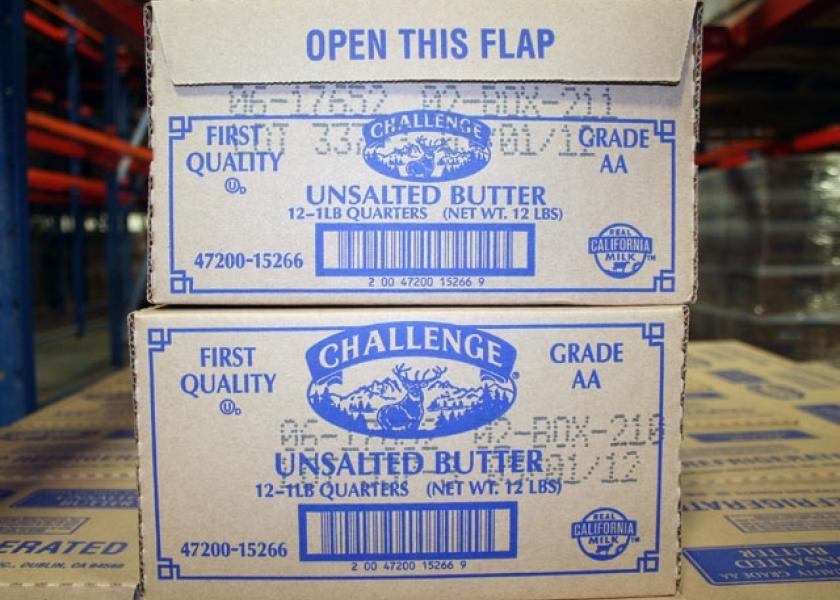Butterfat in Short Supply North of the Border

The United States is not alone in its renewed taste for butter. Butter demand has risen so quickly in Canada that the Canadian Dairy Commission, which is charged with keeping Canada’s dairy industry balanced, is now being blamed for why the country was caught short of butter during the recent holiday season.
“The butterfat shortfall in Canada was so severe last year that the Canadian Dairy Commission authorized license holders to import up to 4,000 metric tons—8.8 million pounds—of butter,” says Sara Dorland, analyst with the Daily Dairy Report and managing partner at Ceres Dairy Risk Management, Seattle. The additional butter was imported from New Zealand, Ireland, Belguim, and Uruguay.
Despite its proximity to Canada, the United States likely did not ship additional butter to Canada under the increased quota due to the high cost of U.S. butter this fall as well as strong domestic demand for the holidays.
According to the Dairy Farmers of Nova Scotia, consumer demand for butter has increased 2-3 percent annually over the past two years, while demand for fluid cream has climbed by 3.5. Dorland further notes that Canada’s annual butter quota is limited to 3,247 metric tons a year, with 2,000 metric tons of that set aside for New Zealand butter.
“That makes the latest increase in quota significant,” says Dorland. “In addition to managing the nation’s milk supply, the commission is charged with buying butter during the summer months for use in fall and winter. But much like in the United States, butter demand has risen so sharply that the Canadian Dairy Commission was caught flat footed.”
In addition to increasing imports, the Canadian Dariy Commission authorized a 4.8 percent increase in milk quota at the start of 2014, but producers have not yet been able to fill the butterfat supply gap. Skim solids are in oversupply in Canada, she adds.
“Due to Canada’s supply management system, the ramping-up period has been prolonged because dairy producers have to access quota and infrastructure investments to grow the milk supply,” notes Dorland. “Likely these delays, exacerbated by increasing butter demand, led to the sharp drawdown of butter stockpiles last year.”
In 2015, Canada’s 8.8 million pounds of imported butter was delivered to creameries in the country that then reworked it, adding their own labels. However, not all creameries in Canada are equipped to process imports. Stirling Creamery in Eastern Ontario is one of those companies, according to the BBC. With less than 25 percent of its usual supply of cream, Stirling had to decline orders and imports in late 2015.
Greg Nogler, vice-president of sales at Stirling Creamery, told the BBC that the Canadian Diary Commission failed to correctly forecast butter consumption. If the shortage of butterfat in Canada isn’t corrected, the firm might be forced to close its doors, he added.
To complicate the situation in Canada going forward, the country’s butterfat deficit is occuring just as the Trans-Pacific Partnership (TPP) free-trade agreement is being finalized. Under the agreement, Canada is expected to increase dairy product imports by the equivalent of 3.25 percent of its 2016 milk production, according to Dairy Farmers of Canada.
“TPP has been contentious in Canada to say the least as survival of its decades-old dairy supply management system comes under question,” says Dorland.







